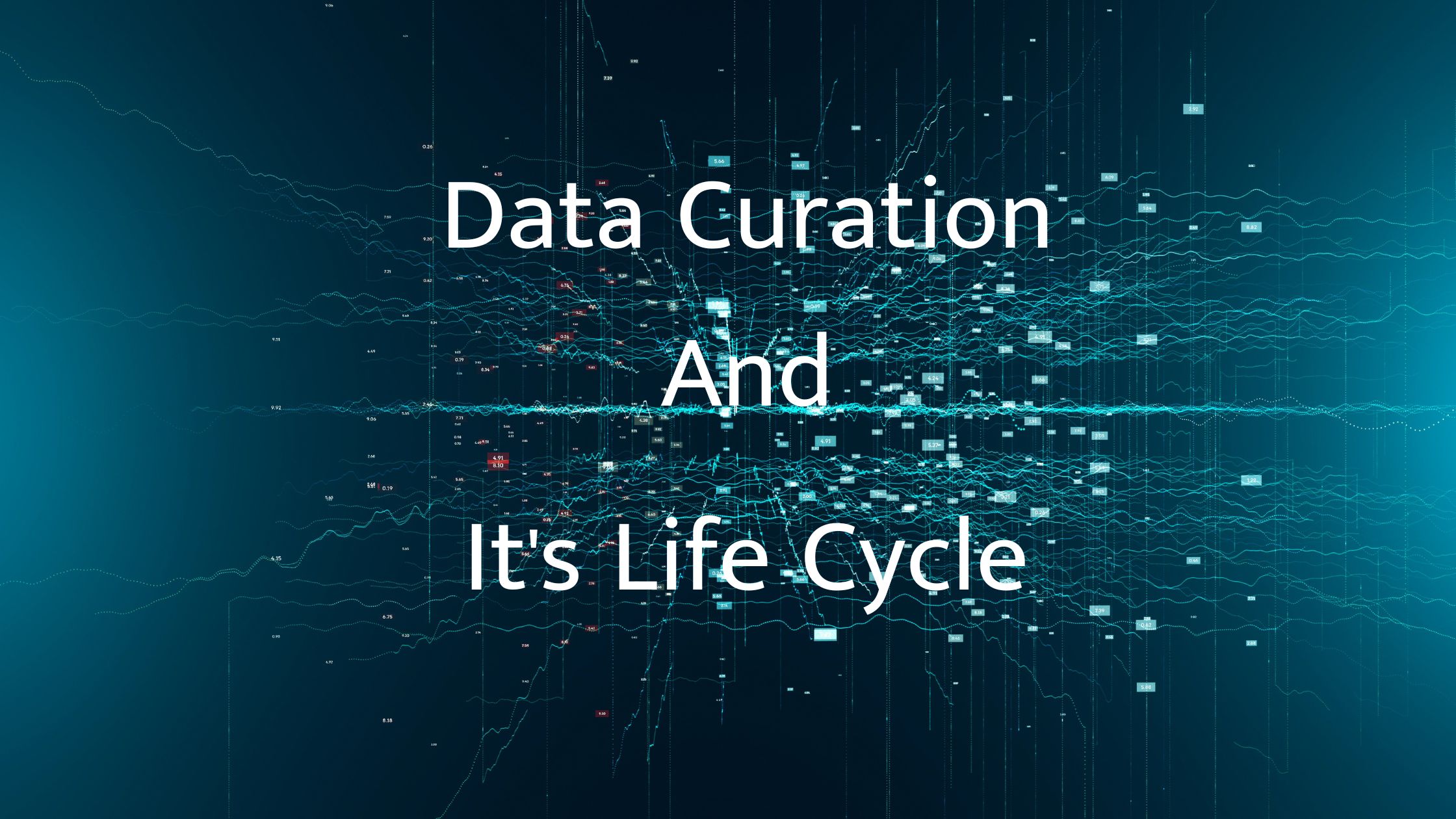Introduction
Data curation is still a constant loop between data producers and data curators. The active management of data’s complete life cycle adds value to digital information for future and present use. “Digital curation expands on the fundamental notions of digital preservation while stressing prospects for additional value and knowledge through annotation and ongoing resource management,” according to the definition.
Data Curation Definition
Data Curation is the process of managing data throughout its life cycle, gathering data from multiple sources, integrating it into various repositories, and ensuring that data is conveniently available and retrievable for future needs.
Data curation is primarily concerned with the maintenance and management of metadata. It is an iterative process that has the ability to add value to data. Data curation is more concerned with managing and maintaining metadata than with the database itself. It encompasses a variety of procedures and activities associated with the organizing and integration of data gathered from multiple sources. It is an ongoing and dynamic process.
In this essay, we will go over a few key points about the data curation lifecycle.
Stages of Data Curation Process:
Let’s start with the first topic, which is about the many stages of data curation:
- Preserving entails gathering data from numerous sources and then organizing and managing it.
- Sharing entails ensuring that data is available and retrievable for an authorized user’s future requirements.
- Discovering entails reusing data with different combinations and producing some new data.
Data Curation Life-Cycle
The Data Curation life-cycle depicts all stages of data from its generation for a research through its dissemination and reuse. The data curation life cycle includes several components.
These elements are as follows:
- Data or Databases or Digital Objects
The initial tier of the data curation life-cycle model is this. Data, databases, and digital objects are regarded as important or core model components. Digital things might be simple files or complicated digital artifacts. - Information Description and Representation
The second tier of the data curation life-cycle model. To define metadata, employ acceptable standards that may be regulated throughout time. This step involves the assignment of administrative, structural, descriptive, technical, and preservation information. Ascertain that metadata is properly represented and interpreted. - Preserving and Planning
This is the third layer in the model of the data curation life cycle. This phase involves planning for data preservation throughout the life cycle. Planning for data preservation necessitates the management and administration of data generation throughout its life cycle. - Community Watch & Participation
This is the fourth layer in the model of the data curation life-cycle. During this phase, many community actions are tracked using various standards and technologies. Monitor data generation operations and aid in the development of standards. This action is ideal for librarians or archivists since they can help with the management obligations of ensuring that data is generated correctly and maintained. - Curate & Preserve
This is the fifth layer in the model of the data curation life cycle. In this phase, action plans are promoted to curation and are retained throughout the life cycle. Taking up the responsibility of monitoring and coordinating administrative measures that encourage curation and preservation. Focusing on data production and supporting best practices through regulations and standards will enhance data organization throughout its life cycle.
The following phases are included in the 6th layer of the Data Curation life-cycle model:
- Create & Receive
This is where many forms of data are created. This stage also collects data in a number of formats. Data creation with descriptive and technical metadata, as well as preservation metadata. Create a data collection policy to be ready to receive data from data creators, other archives, and data centers.
- Appraise & Select
In this phase, data is evaluated and selected in order to be preserved for the long term. During this phase, an appraisal and selection policy must be developed in collaboration with data providers and data curators. Then implement and assess this policy. Do further selection for long-term data preservation and curation.
- Ingest
Data is moved to an archive, repository, or data center. Ensure that this action is conducted correctly. - Preservation Action
Data cleansing, validation, assigning representation information, and establishing suitable data structures or files are all completed processes. Take precautions to assure long-term data preservation. - Store
Keep the data in a secure location. - Access, Use & Reuse
Assuring that data is available to authenticated users and easily retrievable whenever needed. - Transform
The original data is translated here into a new format that the user requires.
The following are the other four critical phases of the Data Curation life-cycle model:
- Conceptualize
Data conceptualization entails employing numerous strategies for producing data, storing data, and finally collecting data. During this phase, data is mostly collected and created. - Dispose
If any data is no longer useful, it is destroyed and disposed of in order to make room for new data at this phase. - Reappraise
In this step, data that fails the validation procedure is returned. - Migrate
Depending on the situation, data is transferred to multiple locations and transformed into a new environment.
Final Thoughts
Data curation has grown more important in the current era of big data, particularly for software processing high-volume and complicated data systems. The word is also employed in historical contexts in the humanities, where increasing cultural and academic data from digital humanities projects necessitates data curation competence and analytical procedures.
In general, curation refers to a set of activities and procedures performed in order to produce, administer, maintain, and validate a component. Data curation is the process of determining what information is worth keeping and for how long.
Contact Oriental Solutions for more information about Data Curation.




